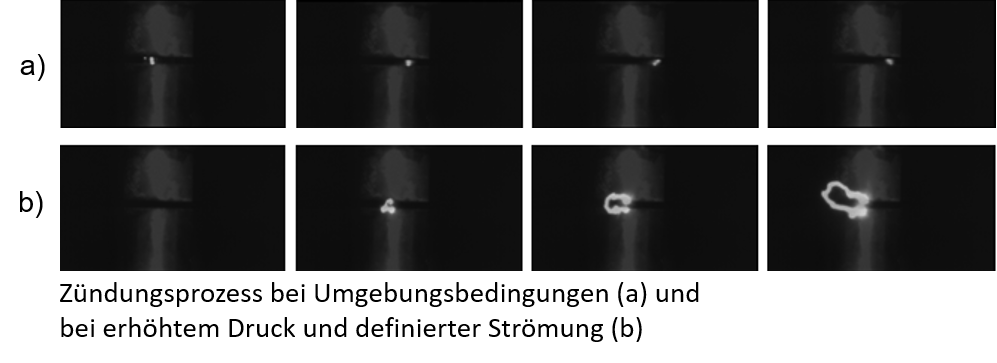Measurements for Validating Ignition Models
The project “Measurements for Validating Ignition Models” in cooperation with the LEC (www.lec.at) aims to support and improve simulation of the ignition process in combustion engines operated with gas. Detailed knowledge of the processes during spark ignition is necessary in order to guarantee stable ignition in SI engines. Of particular interest are flame kernel formation and propagation, which are not described by standard CFD models for engine simulation. Thus it is necessary to add further spark ignition models on to the available CFD models (combustion models).
To support the development and validation of the ignition model, it is planned to conduct basic experiments on a special ignition test bed as well as to test real application scenarios on a single cylinder research engine.

Figure 1: Diagram of the ignition test bed
The ignition test bed was designed and set up as shown in Figure 1 to investigate the electric arc behavior which provides the initial energy for the spark ignition process under a variety of reproducible boundary conditions such as pressure, temperature, flow velocity and ignition system settings. To evaluate the influences of these boundary conditions on arc behavior, pictures were taken with a high speed camera and the current and voltage signals of the ignition system were recorded in high resolution with an oscilloscope. Figure 2 compares the first 250µs of arc movement at ambient conditions without flow (a) and with increased pressure and a defined flow (b), providing a sequence of images at a resolution rate of 120,000 images/s and an exposure time of 1.25 µs (every eighth image is presented). As a result of the flow and pressure, the spark forms later and moves downstream. The greater light intensity in (b) can be equated with an increase in energy supplied to the spark.

Figure 2: Ignition process at ambient conditions (a) and with increased pressure and a defined current (b)
These measuring techniques also enabled investigation of burning time, formation of new sparks and location of breakdown with a higher level of detail. In addition, this test bed allowed the temporal high resolved optical recording of phenomena that had not yet been investigated in detail in this form (e.g. particle ejection of electrode material).
To further verify the models that have been developed, the ignition process will be measured on a single cylinder research engine according to a measurement program that has been optimized for model verification.